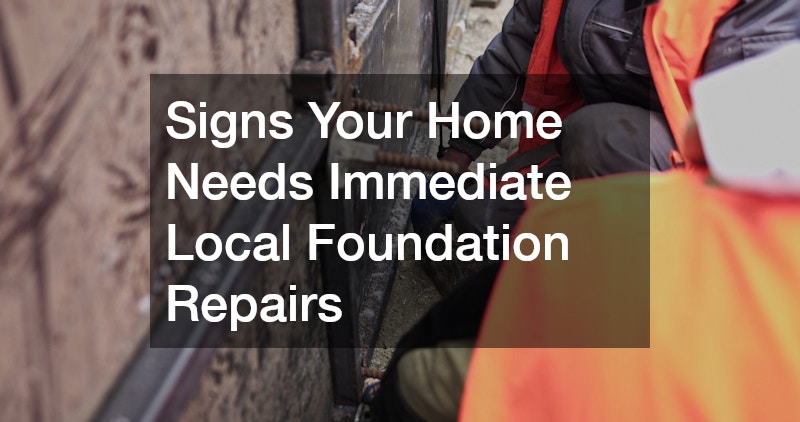Preparing for a new residential roof installation can be exciting yet daunting. This process not only improves the aesthetic appeal of your home but also adds to its value and functionality. However, it’s crucial to understand the process and what it entails to ensure everything runs smoothly for your reroofing services.
1. The Importance of a New Roof

The importance of reroofing services cannot be overstated. It protects your home from harsh weather conditions, increases its resale value, and enhances its overall look. A well-maintained roof also speaks volumes about the homeowner’s attention to property maintenance.
A new roof installation is a significant investment. It requires careful planning and budgeting. But the long-term benefits outweigh the initial costs, making it a worthy investment. Despite the cost, the peace of mind that comes with knowing your home is protected is priceless. With the right roofing contractor companies, you’re assured of quality workmanship that will stand the test of time.
2. Choosing the Right Contractor
Choosing the right roofing contractor ensures a successful roof installation. It’s advisable to opt for local roofing contractors who understand the area’s weather patterns and can recommend the best roofing materials. Experience is another key factor to consider. Established roofing companies have a track record of delivering quality services.
They employ trained professionals who understand the nuances of different roofing systems. The reputation of the roofing contractor companies also matters. Look for reviews and testimonials from past clients. This will give you an insight into their work ethics and performance.
3. Understanding the Process

Understanding the reroofing process can help you prepare adequately for your reroofing services. The first step involves removing the old roof. This is followed by inspecting the roof deck for any damages that need repair. The new roof installation begins once the roof deck is in good condition.
This involves laying down the underlayment and installing the shingles or tiles. The process is completed by installing the flashing and ridge vents. Emergency roof repairs may be necessary if unexpected damages are discovered during reroofing. This is why working with a contractor who offers comprehensive roof repair services is important.
4. Budgeting for Your New Roof
Budgeting is a crucial part of the new roof installation process. The project’s cost depends on several factors, such as the roof size, the type of materials used, and the labor costs. To get an accurate estimate, consult with several residential roofing contractors.
They will assess your roof and provide a detailed quote. Remember to factor in any potential emergency roof repairs during the installation. When budgeting for your new roof, you should save money for contingencies. This will cushion you from any unforeseen expenses that may come up during the project.
5. Material Selection

Your personal preference, budget, and climatic conditions largely determine the choice of roofing material. Common materials include asphalt shingles, metal, tile, and wood shakes. Each of these materials has its pros and cons. Asphalt shingles, for instance, are affordable and easy to install but have a shorter lifespan than other materials.
In contrast, metal roofs offer durability and energy efficiency, albeit at a higher cost. Your residential roofing contractors can advise you on the best material based on your needs and budget. They can also provide samples to help you visualize the roof’s appearance after installation.
6. Preparing Your Home
Before your reroofing services begin, preparing your home is important. This entails moving outdoor furniture away from the work area and covering items in your attic to protect them from dust. You should also inform your neighbors about the upcoming project.
The noise from your local roof replacement can be disruptive, so giving them a heads-up is courteous. Lastly, ensure sufficient space for the roofing materials and waste disposal. This might require clearing your driveway or yard to create room for the roofing companies’ equipment.
7. During the Installation

It’s advisable to stay home while installing your reroofing services, especially if you have pets or young children. The noise and movement can be unsettling for them. If possible, consider finding a temporary place for them to stay. Ensure regular communication with the contractor. They should keep you updated on the progress and any issues that arise.
If emergency roof repairs are needed, they should inform you immediately and discuss the next steps. Remember to maintain a safe distance from the work area. Roofing involves heavy lifting and the use of power tools. Staying clear of the work area will ensure your safety and that of the workers.
8. After the Installation
The contractor should thoroughly clean up once your reroofing services are complete. This includes removing all debris and leftover materials from your property. They should also use a magnetic sweep to pick up any nails or metal pieces that might have fallen during the installation. After the cleanup, the contractor should conduct a final roof inspection.
This ensures that everything has been installed correctly and there are no issues. They should also address any concerns or questions you might have. Lastly, ensure you receive all the necessary documentation. This includes the warranty information, invoice, and any other relevant paperwork. Keep these documents safe, as they may be needed in the future.
9. Understanding the Contract
Before you sign any contract with your chosen roofing contractor companies, it’s crucial to understand what it entails. The contract for your reroofing services should outline the scope of work, the cost, and the timeline for the project. It should also detail the materials to be used and the procedures for any potential emergency roof repairs.
If there are aspects of the contract you need help understanding, feel free to ask for clarification. A good contractor will take the time to explain everything to you and ensure you’re comfortable before proceeding. It’s also advisable to have a lawyer review the contract before signing. This will protect your interests and ensure you’re not agreeing to unfavorable terms.
10. Ensuring Proper Ventilation
Proper ventilation is essential for the longevity of your new roof. It prevents moisture buildup, which can lead to mold growth and rotting of the roof deck. Therefore, ensure the contractor installs sufficient vents during the new roof installation. The type and number of vents needed depend on the size and design of your roof.
Your residential roofing contractors should be able to advise you on the best ventilation system for your home. Remember, a well-ventilated roof not only lasts longer but also helps in energy conservation. It regulates the temperature in your attic, reducing the need for artificial cooling or heating.
11. Addressing Any Structural Issues
During your reroofing services, the contractor may discover structural issues that must be addressed. These could include a sagging roof deck, damaged rafters, or problems with the insulation. Such issues should be corrected before the new roof is installed. If these issues aren’t addressed, they could compromise the integrity of your new roof.
They could also lead to higher energy bills due to poor insulation. Structural repairs are typically not included in the initial quote. Therefore, consider setting aside money for potential structural repairs when budgeting for your new roof installation.
12. Dealing with Emergency Repairs
Despite the best planning, emergency roof repairs may be necessary during the new roof installation. For instance, if the old roof is removed and it suddenly rains, immediate measures must be taken to protect your home from water damage.
This underscores the importance of working with roofing companies that offer emergency roof repair services. They will have the skills and resources to address such situations promptly and effectively. Remember to keep close communication with your contractor throughout the project. This will ensure any emergencies are handled swiftly and to your satisfaction.
13. Managing Waste Disposal
a lot of waste is generated during the reroofing process. This includes old shingles, nails, and packaging materials. Your roofing contractor should have a plan for managing this waste. Most roofing contractors include waste disposal in their reroofing services.
Once the project is complete, they will have a dumpster where all the debris is collected and hauled away. However, it’s always good to confirm this with your contractor. You don’t want to be left with roofing debris at the project’s end.
14. The Importance of Regular Maintenance
regular maintenance is key to ensuring its longevity once your new roof is installed. This involves periodic inspections to check for any signs of damage or wear and tear. If any issues are detected, prompt roof repair services should be sought.
Regular maintenance also entails cleaning your gutters and ensuring your roof is debris-free. This prevents water buildup, which can cause leaks and other roof problems. Your roofing contractor can advise you on the best maintenance practices for your type of roof. Some roofing companies also offer maintenance packages, saving you time and money in the long run.
15. Understanding Warranties
Warranties are critical to the new roof installation process. They protect in case of defects or issues arising after the installation. Most roofing materials manufacturers offer warranties that cover defects in their products. Apart from the manufacturer’s warranty, your roofing contractor should also offer a workmanship warranty.
This covers any issues resulting from improper installation. Ensure both warranties are included in the contract. Understanding your warranties can save you a lot of money and stress. If anything goes wrong within the warranty period, the repairs or replacements will be done at no cost.
16. Safety Measures During Installation
Safety should be a top priority during the new roof installation. Roofing involves working at heights and using power tools, which can be dangerous. Therefore, it’s important to ensure your contractor takes necessary safety precautions.
The crew should wear appropriate safety gear, including helmets, gloves, and safety harnesses. They should also use safety equipment such as scaffolding and ladders correctly. Homeowners can contribute to safety by keeping children and pets away from the work area. You should also avoid walking under ladders or scaffolds where work is being done.
17. Dealing with Unexpected Delays
Despite careful planning for your reroofing services, unexpected delays can occur during the new roof installation. These could be due to bad weather, the discovery of structural issues, or delays in material deliveries. It’s important to remain flexible and patient during such times.
Your roofing contractor should keep you updated on any changes in the schedule. They should also work to minimize the impact of the delays on the project. Remember, while it can be frustrating, these delays are often beyond the contractor’s control. The important thing is that the work is done correctly, even if it takes slightly longer than expected.
18. Inspecting the Finished Work
Inspecting the finished work is important once the new roof installation is complete. Your contractor should walk you through the new roof, explaining everything they have done. This is your chance to ask questions and raise any concerns.
During the inspection, pay attention to the quality of workmanship. The shingles or tiles should be properly aligned and securely fastened. The flashing around chimneys and vents should also be well-sealed. If you notice anything that doesn’t seem right, don’t hesitate to bring it up. A reputable contractor will address your concerns and ensure you’re satisfied with the work.
19. Enjoying Your New Roof
after all the planning and hard work, you finally have your new roof. It’s time to enjoy the benefits it brings to your home. A new roof not only enhances the appearance of your home but also improves its energy efficiency and value.
Remember to maintain your new roof properly to ensure it lasts for years. Regular inspections and prompt repairs can help detect and address issues early before they escalate. The journey to a new roof may have been challenging, but the result is worth it. So, sit back and enjoy the peace of mind of knowing your home is well protected.
Final Thoughts
A new residential roof installation is a significant undertaking. It requires careful planning, understanding the process, selecting the right materials, and choosing the best local roofing contractors. Despite the challenges that may arise, the result is a durable and beautiful roof that adds value to your home and offers protection for many years. Remember, the success of your project lies in the details. Therefore, take time to understand each step, ask questions, and make informed decisions.




